House Diary: Vernal Equinox 2024
Well, it’s that time again – Spring has sprung, and life is returning to the land. The first wave of early spring bubs has already passed, after a pre-St Paddy’s week of above normal temps, rising into the 70s locally. But turnabout is fair play, and Winter’s back for a bit, with highs on Spring’s first day just in the upper 30s. Yes, it’s March (Meteorological) Madness, as per usual in these crazy climate change days. Known for its seesawing weather at the best of times, this March has been a ceaseless round of fair and foul, with temperature records set both high and low. At least indoors things are operating on a more reliable schedule. Now that the new knee is rested and ready, I’m back to full-on seasonal decorating for my second-favorite season of the year.
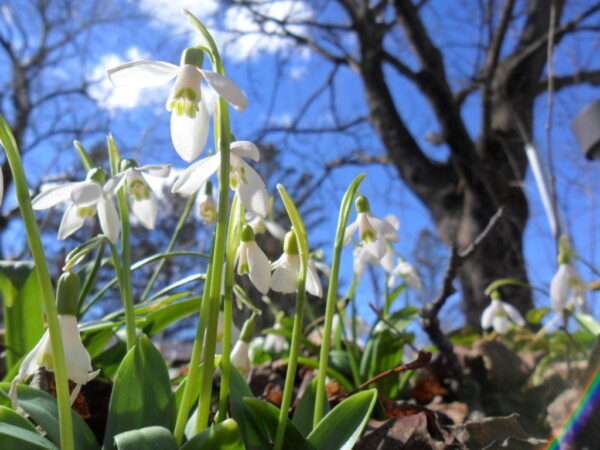

It’s been a lovely spring in the garden visually, with some good progress noted among my earliest bulb flowers, now established in their fourth spring or more on the property. When I laid out the plantings for the path borders in that first autumn of 2019, I divided my small bulbs – snowdrops, crocus, winter aconite, squill, bluebells – in patches to either side, and repeated the varieties that followed the path up on the sandmound with more patches ringing the top, using half the total in each location. For whatever reason, all the patches on the rise are doing markedly better than those at the top, to the extent that I believe some reorganization might be desirable.

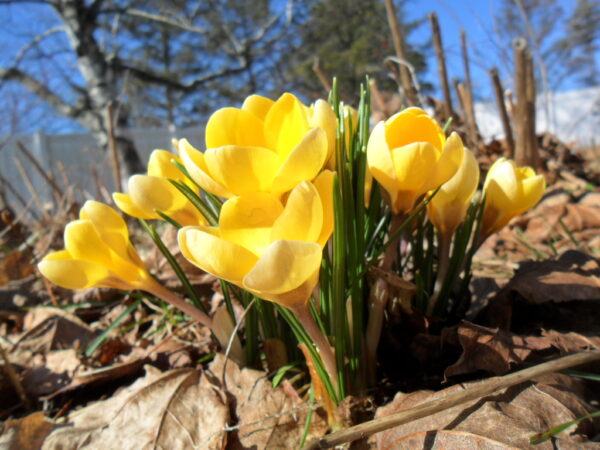
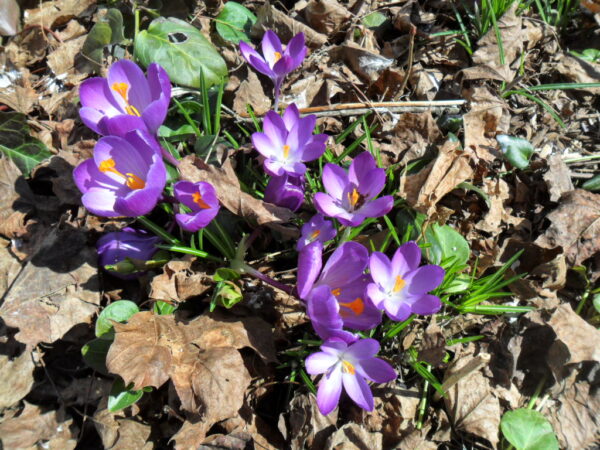
There’s an old saying that it isn’t a garden until everything’s been moved twice, and I feel I’m testing that premise in real time. A patch of eranthis (that’s winer aconite to you non-horticulturist types) at the hill path’s base has retained nine of ten original plantings, and are beginning to show a bit of expansion, albeit at a snail’s pace. In contrast, only three of ten have returned on top this year, and I think it’s time to pull out what remains and integrate them with their more productive brethren downhill. That will leave about a 4-5 foot border of prepared, turned, weed-barrier-free soil completely empty and ready for planting with new bulbs this fall – ask me if I mind!

Similarly, the snowdrops and crocus on the sandmound are struggling, but holding their own, while those on the path rise are, by and large, doing well and expanding prodigiously. Some varieties of crocus, particularly the deep amber yellow I term “saffron” and the pale yellow I call “butter,” have spread wonderfully, up from 2 or 3 blossoms per bulb in that first season, to 8 or 9 now. Others, the white and white-blushed-with-purple, are taking longer, but generally showing some advance.

With the snowdrops it’s much the same, with most of them adding 2 or 3 blooms per bulb per year, and their patch slowly filling in. As the name implies, these are typically the first to open; this year was among the earliest, with some blossoms radiating white as early as the last week in January. The day before Valentine’s Day, we got slammed with 10” of snow, completely covering these, but when they melted out a week later, they were perfect, not even bowed.
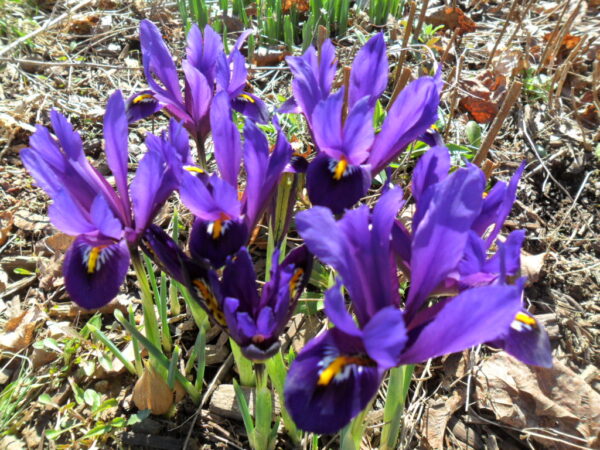
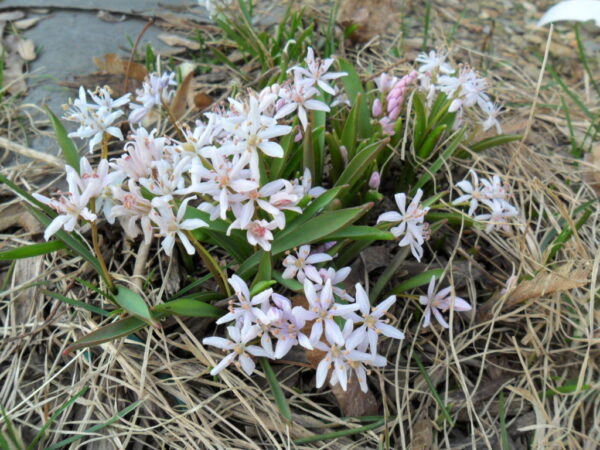
There are later-blooming crocus on the property as well, some heirloom holdovers from my parents’ day. These were gathered in a patch along what used to be the limits of the foundation bed, by the kitchen door stoop, in classic tones of white, purple and a purple-striped variety called “Gypsy.” But after expanding that bed a good four feet, I noticed the line had broken, and was now a staggered zigzag extending from the old parameters in a jagged line across the new bed, right into the grass path beyond.
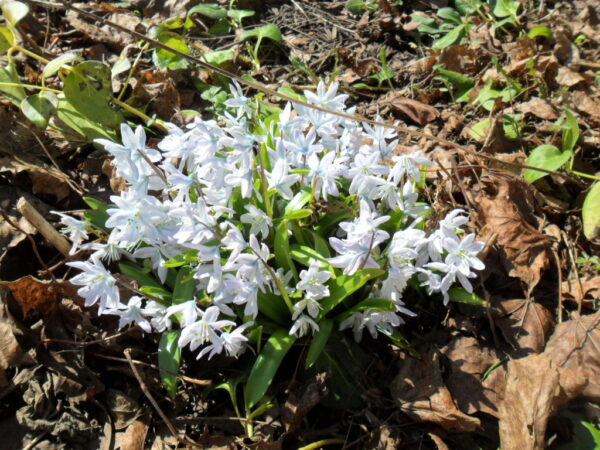

This was clearly the work of squirrel gardeners, who will ofttimes dig up a bulb, then replant it elsewhere for future consumption, only to forget where they put the bally things. Once I’d freed the earth under the turf in the expanded bed, making the digging easy, they took it upon themselves to redesign the crocus patch, and did quite a nice job of it, too. I’m very happy with their placement choices, and enjoy seeing them now, some three years on, beginning to enlarge in their new homes as well.

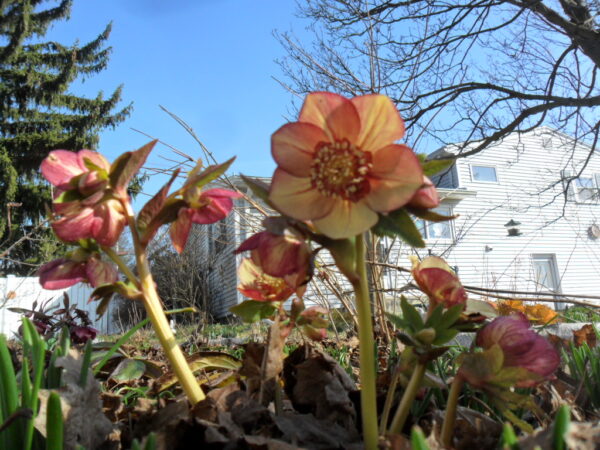
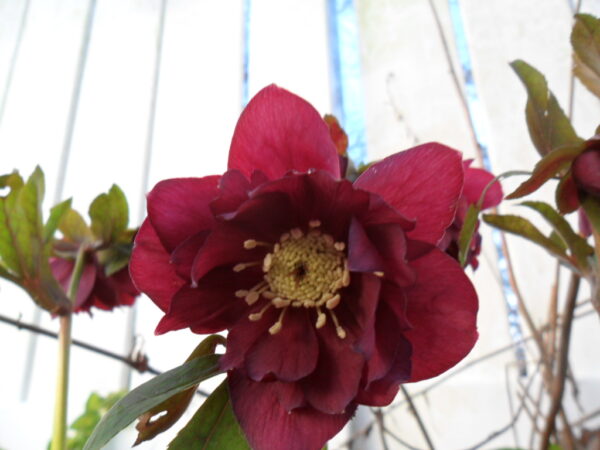
That second autumn I bumped up my small bulb quota, including a contingent of Pickwick, a latter-day successor to Gypsy, with a similar purple stripe. Pickwick is markedly larger than Gypsy, however, and the patch I put in by the laundry door is quite stunning now. I’m thinking I might want more of these for that newly available space atop the sandmound.

That same year I added a couple patches of mixed crocus varieties, with early- and mid-season varieties providing color in the same area for more than a month. And annually I buy small pots of deep purple crocus at Walmart, maybe three or four, then choose a new spot to embellish when they’ve finished blooming, planting them there for return the next spring.

Most of my standard-size narcissus are middle and late season bloomers, just getting going by the equinox, but the mini tete-a-tetes and Jet Fires, among my favorites, come into their own in the first two weeks of March. Tete-a-tete’s golden glow is irresistible, and in addition to a mass planting by the laundry door, I’ve cultivated smaller patches all across the garden, for pops of brilliant sunny yellow everywhere the eye may range. Jet Fire is a bit taller, and starts slightly later, perhaps a week behind the tetes, but close enough to be considered blooming contemporaneously. Jet Fire sports trumpet cups of orange around a yellow frill, the earliest example of what, for me, is the winningest color combination going for daffodils.

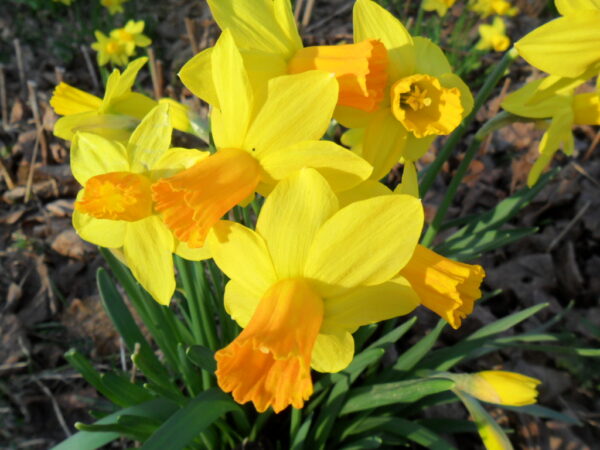
The iris reticulata add more purple to the early spring landscape, and are also thriving, though again, those on the flat do better than those on the mound. The earliest scilla varieties are about at peak now, a lovely white-flowered variety with palest blue ribs, called mischtschenkoana. Yeah, that’s a mouthful, so we’ll just call it “mischt.” Not just a mouthful, mischt is an eyeful, too; I started with just three small patches, and added three more the following year, I loved them so much. All are doing well, brilliant splashes of snowy white that beam like beacons across the garden.



But I’m most pleased with how my hellebores are performing. I bought these just two years ago, five different potted varieties, among the last things I purchased from my local perennial farmers (sadly, now retired). Hellebores can be temperamental about transplant, and I lost one of the five that first season, but now, in their third spring here, those that remain are well established and expanding their bloom.

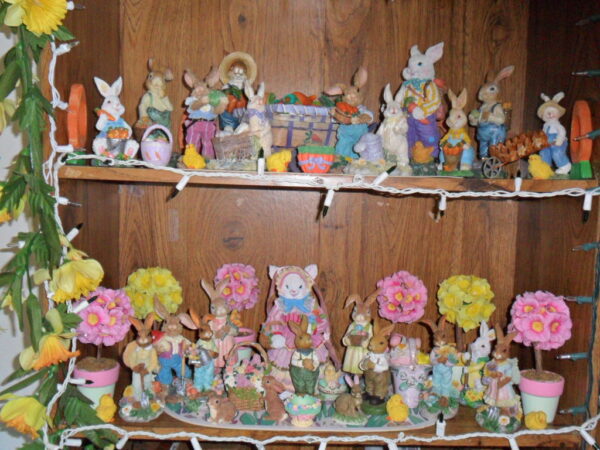
Hellebores are strange plants in many ways. Among the earliest non-bulb species to bloom (coming to flower as early as December in moderate climes), hellebores remain virtually evergreen, only losing their old leaves just before they send up fresh shoots. Their mature leaves are large and palmate, almost tropical in appearance, but the shoots emerge leafless, just naked spikes with flower buds, adding tiny vestigial side foliage unfolding as they open. Here that process begins in late January, with fully opened flowers visible by mid-February. Fairly low-growing, hellebores also bloom downturned, so they are harder to view, and even more challenging to photograph. But hellebores are well worth the effort – their flowers are like elaborate, colorful Baroque jewels, floral brooches fitting for any dowager duchess bosom.
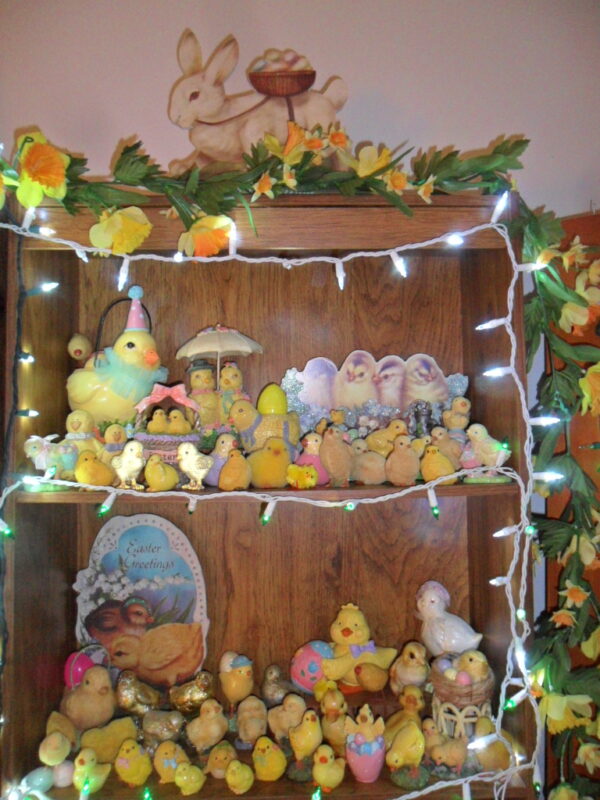

And that’s about where we stand outdoors, as of even date. Inside, spring is in full swing!
I’ve been cutting and forcing forsythia indoors for weeks, and the potted bulb bonanza began a month ago, with rotating in fresh pots of tetes and crocus as the previous ones fade, all grist for future planting. And of course, the mandatory pot of “shamrocks” for St Patrick’s Day (really oxalis).
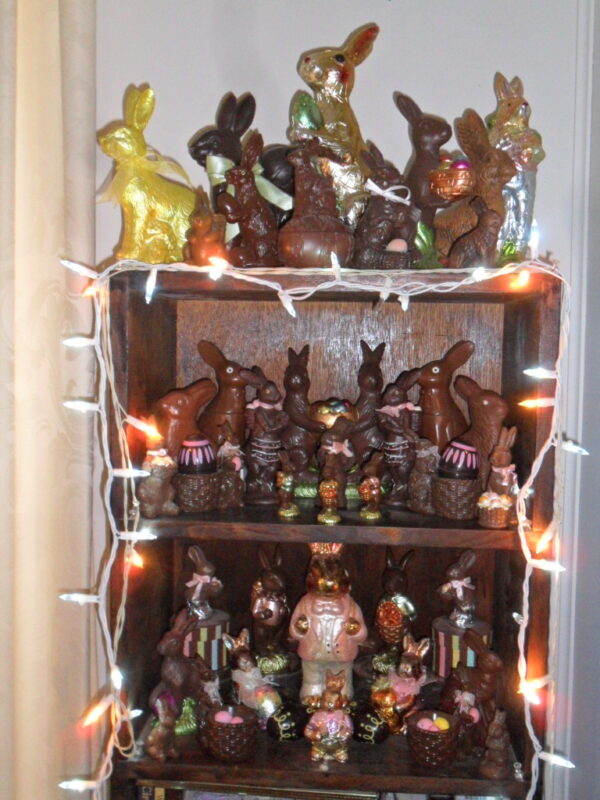
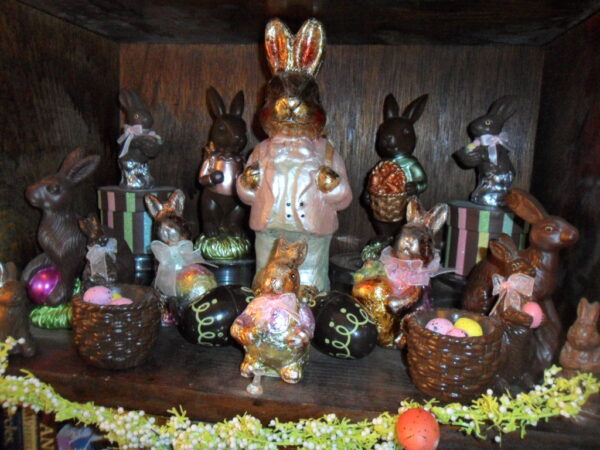
But indoors, we’re not limited to natural elements like these. Silk versions of tulips, daffodils, iris, forsythia and other spring favorites populate the house, some potted, some in bouquets, others in garlands strung along archways, doors and bookcases. Eggs, of course, as symbolizing the fertility of spring, are everywhere, heaped in baskets, resting on egg cup holders, strung as garlands. Unlike Yule and Halloween, I can still juuuuust fit the entirety of the spring collection into the display space, though it’s bursting at the seams.

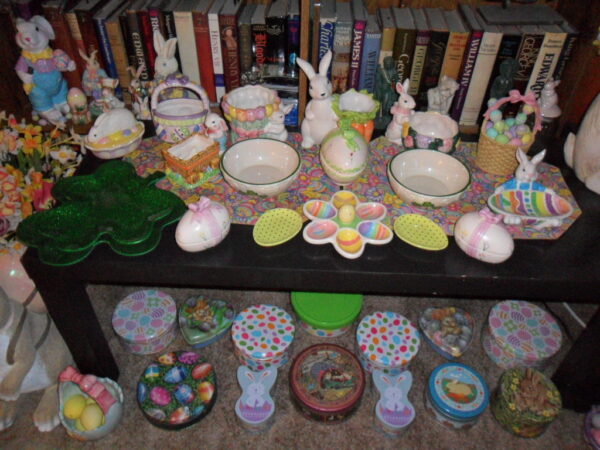
There are shelves devoted to retro, antique-style rabbits, chicks, egg cups, hinged boxes, “chocolate” bunnies, white rabbits, brown rabbits and, of course, leprechauns. There are a few “scene” shelves as well – like the miniature Bunny Egg Hunt in the Park scene, with 88 diminutive inhabitants, and a two-shelf colossus of the Rabbit Family, with half the clan harvesting carrots and cabbages with the dad, and the other half foraging for mushrooms and wildflowers with the mom.

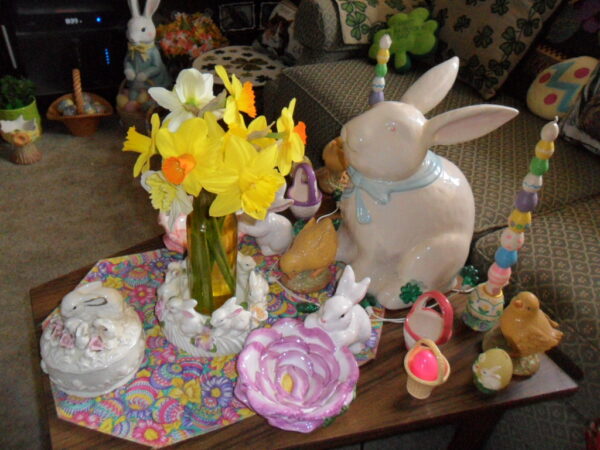
The principal leprechaun collection is comprised of 66 Irish mischief-makers spread out across the old corner cupboard that had been my grandmother’s, and overflowing onto two adjoining bookcase shelves. It’s become so extensive that I’ve further subdivided it by theme – leprechauns with pipes here, with pots of gold there, with shamrocks, ale kegs, horseshoes or accordions, in little clumps and clusters everywhere. But the St Pat’s collection includes much more than tabletop leprechauns, such as large felt shamrocks and leprechauns that hang on walls and kitchen cabinets, shamrock garlands that line bookcases and doorways, and shamrock lights that glow greenly on end tables and bookshelves.
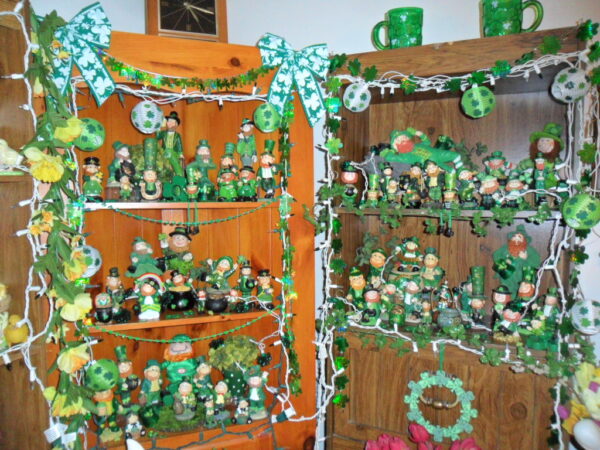
As with all holidays, Goodwill has been my friend, swelling the ranks for very little expense. Mostly I find kitchenware, of which there is a growing number, including some very unique pieces. Both the dining room hutch and the “overflow” hutch in the guest room are crammed with all manner of seasonal food-related items, from cookie and candy jars to plates, platters, bowls and salt & pepper sets. The dining room hutch is also festooned with green mini lights, in keeping with the color scheme of both spring and St Pat’s.


Naturally, some space has to be reserved for fresh bouquets. With the bulbs now well-established, it’s such a luxury to step out my back door and cut an armful of daffodils for the house, leaving the garden looking none the poorer. And such a joy to be able to harvest my first fresh produce – tender chive shoots, for the traditional roasted beet salad that accompanies the Equinox Dinner.
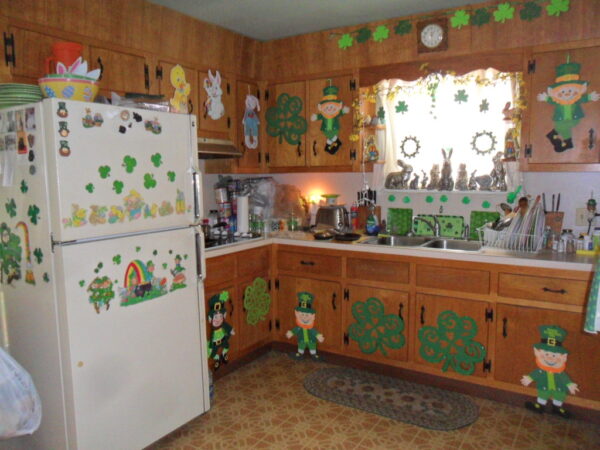
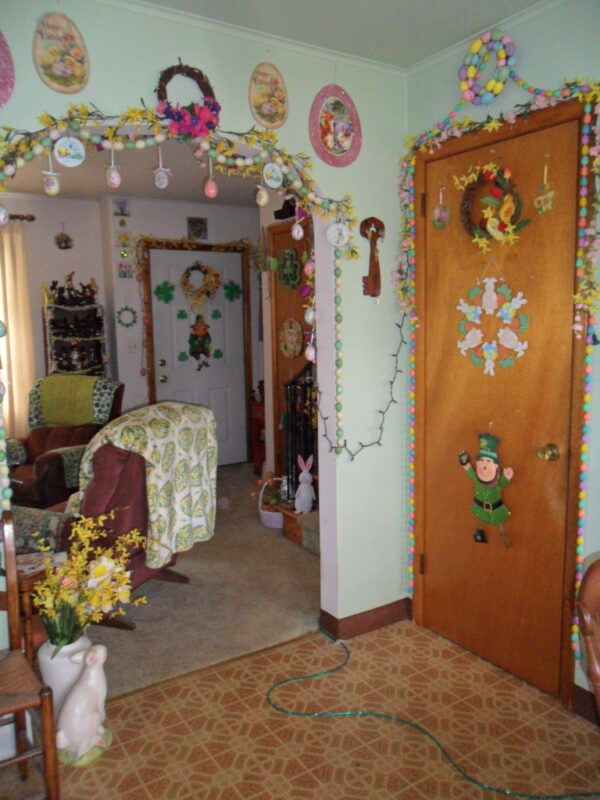
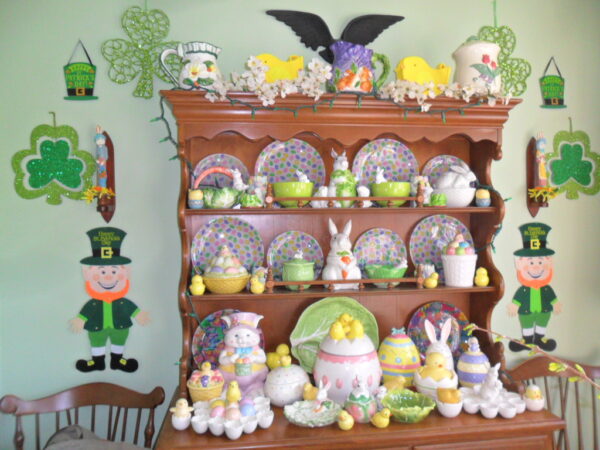
Spring holidays are coming cheek-by-jowl this year, with St Patrick’s Day, the Vernal Equinox, Palm Sunday, Good Friday and Easter crammed into a fortnight at the end of March. Although I’m not Christian, I do enjoy celebrating the holidays of my youth, and continue to make seasonal recipes that have been favorites in my family for generations. So the last half of March will be a ceaseless calorie-fest of roast sausage and colcannon, Irish soda bread, asparagus-mushroom soup, bacon and cheddar quiche, hot cross buns, and hard-cooked dyed eggs.
]

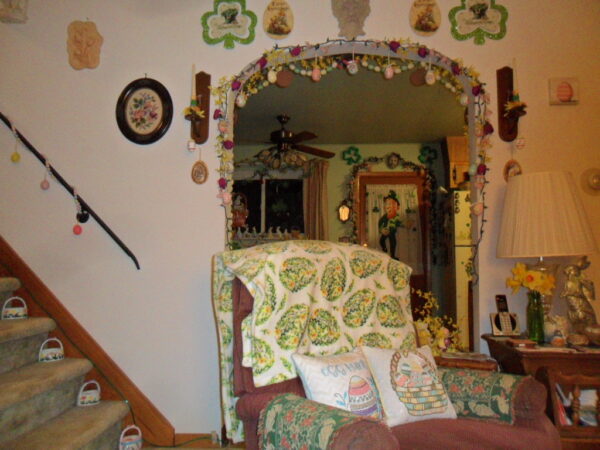
My Daffodil Dinner will come two weeks later, a new tradition designed to showcase my garden at its spring best, and incorporating a traditional Pennsylvania Dutch Easter feast of glazed ham, au gratin potatoes, sugar snap peas and dandelion in hot bacon dressing. My grandfather used to forage for dandelion in Nazareth Borough Park, which abutted his property, but I’ve got plenty of home-grown dandelion ready to hand in my own garden, a seemingly endless supply of bitter greens to slather in the rich, creamy dressing, topped with sliced cooked egg. Dessert has yet to be determined for the occasion, but likely choices include coconut custard pie, lemon bars, chocolate cream pie or strawberry-rhubarb crisp. Or guests can just nibble from the baskets overflowing with candies and sweet treats that each will receive.

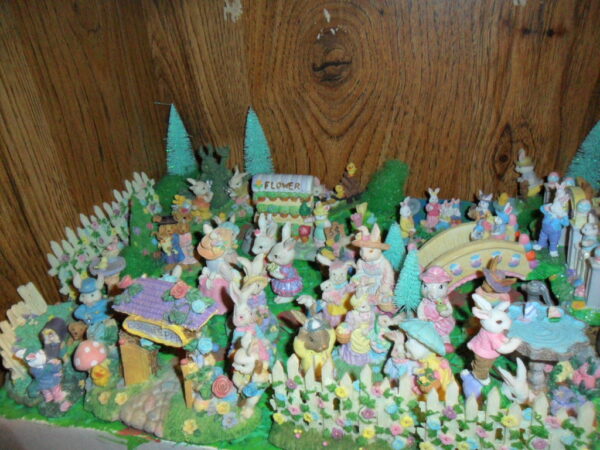
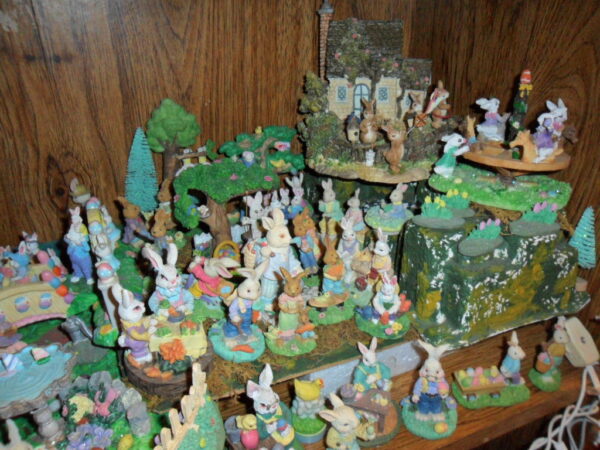
Spring signals an end to the relatively somnolent winter months, replacing garden daydreams with garden reality, as weeding, watering, trimming and planting resume. It’s an abrupt shift from theory to action, it’s true, but there’s still time to grab a beverage and a good book, and settle into the chair under the birch which offers the best view of the paradise that’s been created here.
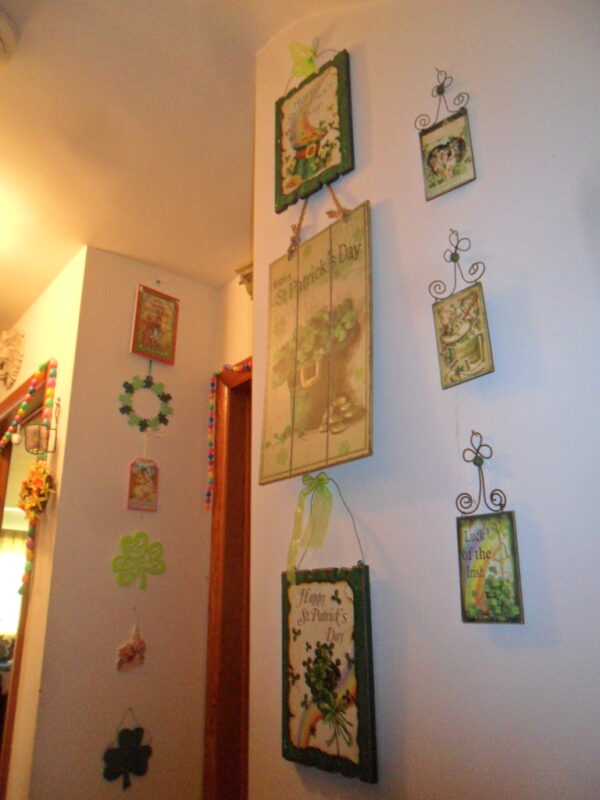

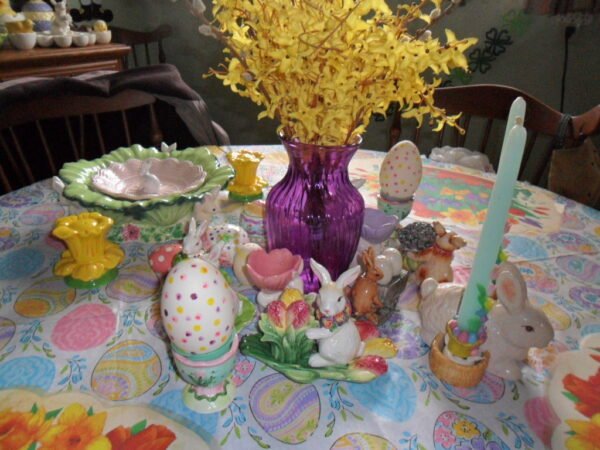
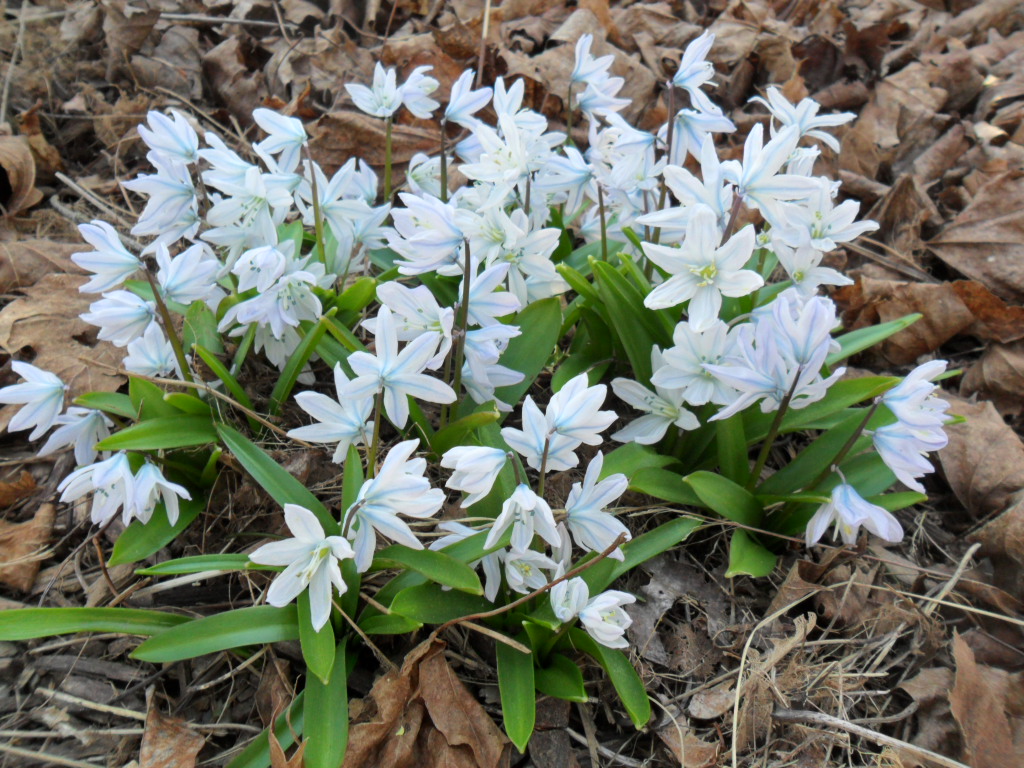

4 comments, add yours.
Cali
Wow, wow, wow! I want the video version! So amazing …. inside and out!
Irmgard Dering
… a feast for the eye! Thank you!
Laurien
It’s true, all the special occasions are so close together this spring and it’s amazing you’ve been able to pull together a display that honours them all! Also a great point that bulb plants are an early food for the bees! Loved the hellebore photos! I am sure your Daffodil Dinner will be a great success! Have fun!
Charlotte
Flowers (and butterflies) are the most miraculous things in the world to me.
Thank you, Alex, for once again sharing yours with us.
Here in the southern hemisphere, we are declining into autumn, accompanied by heat waves in the day and very chilly nights. I shall refer back to your gorgeous spring garden to keep myself soothed…